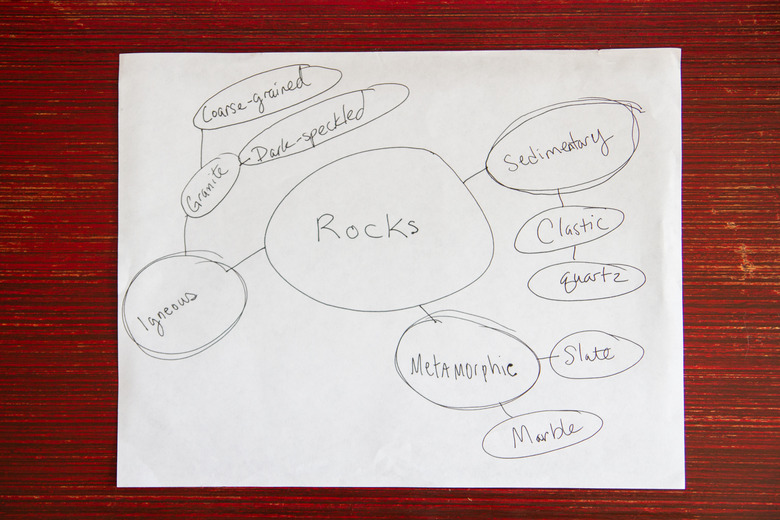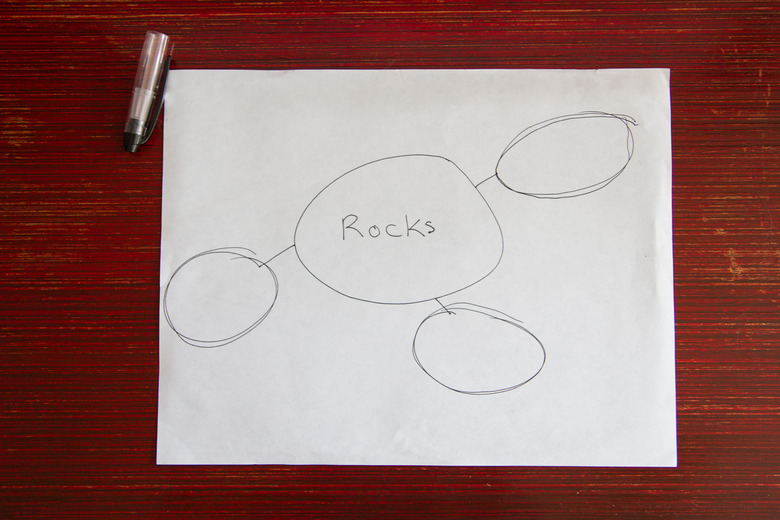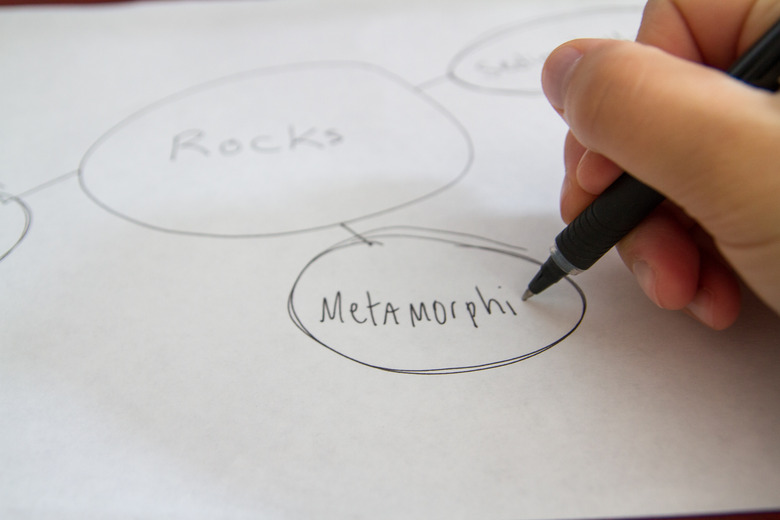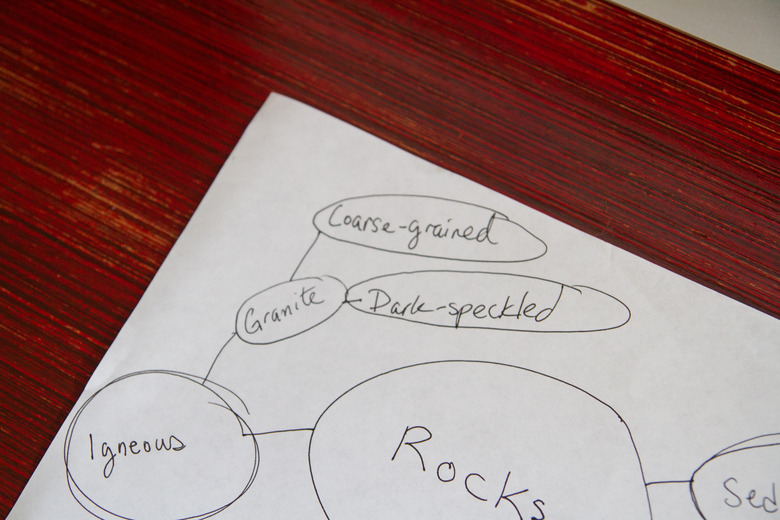How To Create A Semantic Map
Put simply, a semantic map is a visual representation of what a word means. More specifically, a semantic map shows in an organized fashion the relationship of a broad concept to narrower concepts and the attributes associated with each of those narrower concepts. Semantic maps are a valuable learning tool. According to Michigan State University, the ability to create semantic maps can help increase reading comprehension and boost the skills necessary to make connections between what's being learned and the real world,
Step 1
Draw a circle in the middle of a piece of paper.
Step 2
Write one word that represents a thing or concept you wish to learn more about in the middle of the circle. Write, for example, the word "rocks" in the circle.
Step 3
Draw three lines branching off from the circle. Pencil in a circle at the end of each line, which will provided spaces to fill in information that directly relates to the central concept "rocks."
Step 4
Write a term that names or describes the different classes of the word in the center circle in each of the three branching circles. Write, for this example,"igneous" in one circle and "sedimentary" and "metamorphic" in each of the two other circles.
Step 5
Draw more lines extending from each of these three circles now holding a class name. Add a circle to the end of each new line. Write some types that fall into each class of rocks in the appropriate circles. Write, for example, "granite" in one of the circles branching off "igneous."
Step 6
Draw more lines branching off from each circle containing a type. Add circles at the end of the lines. Write identifying characteristics for each type in these newest circles. Write, for the type "granite," for example, "coarse grained" and "dark speckled" in two of the circles.
Things Needed
- Paper
- Pencils
TL;DR (Too Long; Didn't Read)
You're not limited to straight lines and circles when creating your semantic map. Any types of shapes and lines work as long as they're all connected to the core concept, which may or may not be located in the center of the map. Color-coding the semantic map can be helpful in separating the different classes and types and their descriptions, and allow you to readily identify attributes of the core concept. Semantic maps can be used effectively for outlining a paper or report on a certain topic.
Cite This Article
MLA
Ipatenco, Sara. "How To Create A Semantic Map" sciencing.com, https://www.sciencing.com/create-semantic-map-5152738/. 24 April 2017.
APA
Ipatenco, Sara. (2017, April 24). How To Create A Semantic Map. sciencing.com. Retrieved from https://www.sciencing.com/create-semantic-map-5152738/
Chicago
Ipatenco, Sara. How To Create A Semantic Map last modified March 24, 2022. https://www.sciencing.com/create-semantic-map-5152738/






